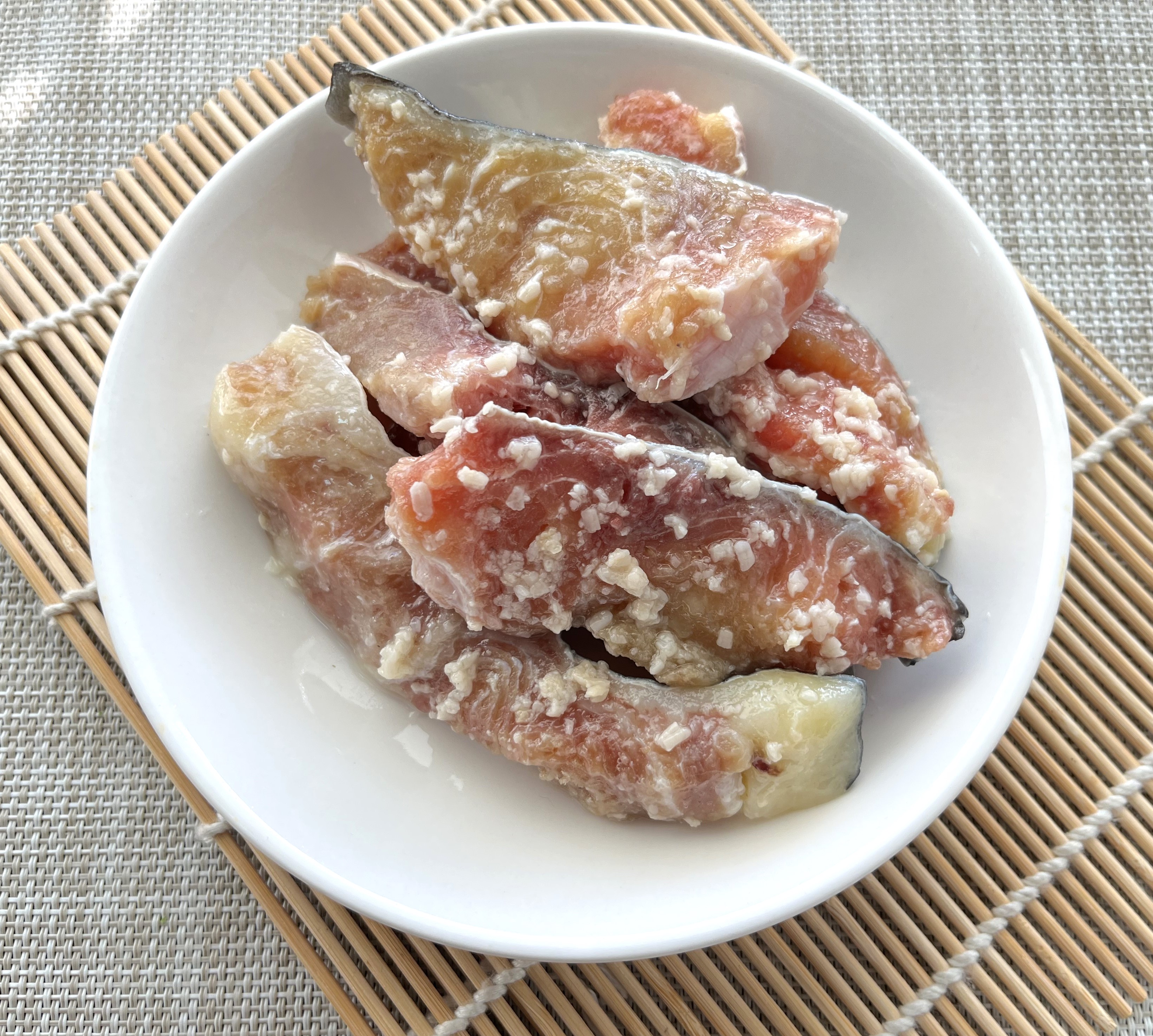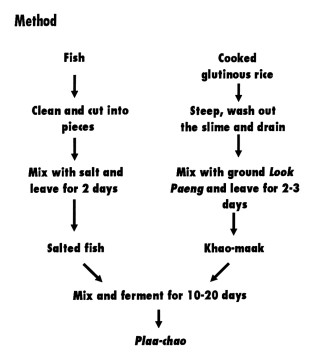Plaa-chao_Koong-chao
- Name (Thai)
- ปลาเจ่า
- Name (English)
- Thai Sweetened Fermented Fish/Shrimp
- Local name
- Plaa-chao Plaa-knao-maak Koong-chao
- Fish normally used
-
Puntius gonionotus (Ta-pian)
Pangasius lamaudi (Tay-poh)
Pangasius hypophthalmus (Sa-waai)
Kryptopterus bleekeri (Neua-orn)
Macrobrachium lanchesteri (Koong)
- Product
- Fishery
- Ingredients
- Fresh water fish or shrimp. Salt, khao-maak (fermented glutinous rice).
- Fermentation
- 10-20 days.
- Storage life
- 2-3 months.
- Microorganisms
-
Bacillus sp.
Reference The traditional fermented foods of Thailand ISBN 9679932249 Year 1995 Micrococcus sp.Reference The traditional fermented foods of Thailand ISBN 9679932249 Year 1995 Pediococcus halophilusReference The traditional fermented foods of Thailand ISBN 9679932249 Year 1995 Staphylococcus sp.Reference The traditional fermented foods of Thailand ISBN 9679932249 Year 1995 Endomycopsis sp.Reference The traditional fermented foods of Thailand ISBN 9679932249 Year 1995 Saccharomyces cerevisiaeReference The traditional fermented foods of Thailand ISBN 9679932249 Year 1995 - Properties
- The products have a sweet, sour and salty taste with pleasant aroma (slightly alcoholic). Plaa-chao is pink-white or brown depending on the kind of fish used. Koong-chao is pink.
- Method
- 1. Descale, cut off the head, gut and wash the fish. Cut into 1 inch cubes. 2. Mix the fish pieces with fine salt in the ratio of 3:1 (w/w) and put in jars for 2 days. 3. Wash the fish and let it drain. Mix three parts of fish by weight with one part of Khao-maak. Pack the mixture into jars and leave for 10-20 days to ferment.
- Production
- Home industry.
- Consumption
- 1. Eat as a condiment by cooking with coconut milk, shallots, minced shrimp or pork and chilli pepper serve with fresh vegetables such as cucumber, eggplant, cabbage and winged bean. 2. Cook with water instead of coconut milk. Serve with rice and fresh vegetables such as cucumber, eggplant, cabbage and winged bean.


